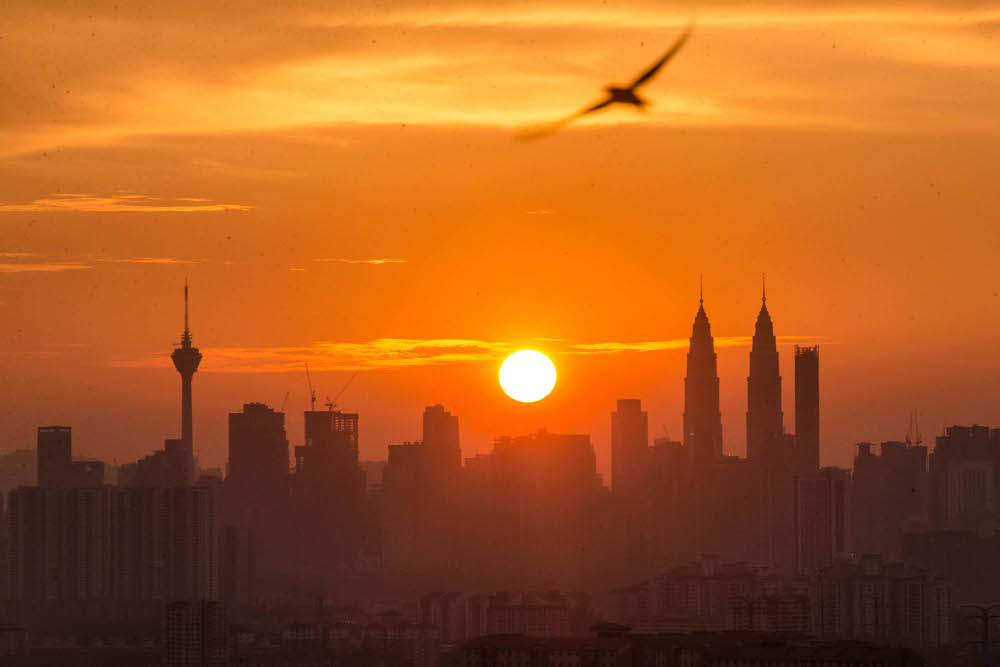OCTOBER 28 ― Perhaps more than ever before, Malaysians will be paying close attention to the Budget when it is unveiled this tomorrow. They will be looking for signals from the government over how it plans to chart our country’s recovery from the Covid-19 pandemic.
People will naturally hope for various aids, whether for new ones to be introduced, or existing ones to be continued and perhaps increased. Still, the best way to ensure Malaysia’s economy recovers and indeed, regains its place as one of the most dynamic in Southeast Asia, is through major national projects. The government must take the lead on this — there simply is no other way.
As a patriotic Malaysian who wants the best for his country, I feel two areas deserve special government attention: digital infrastructure and high-speed rail (HSR).
The necessity of the first and the shape it should take, should be obvious to all. Malaysia needs cheap, reliable and fast internet connections, from Arau to Tawau. No Malaysian should be denied this. 5G ought to be the bare minimum. The previous government had laid the groundwork for this through the National Digital Network (Jendela) and other networks — its successor ought to continue and ramp up its efforts.
The latter needs a bit more explanation. Malaysia as we know, abrogated a previous plan for a HSR that would have connected Kuala Lumpur to Singapore earlier this year.
Since then, there have been various proposals to revive it. Some have called for the original KL-Singapore plan to simply be revived wholesale.
I fear this is not an option, at least for the time being. Whatever the original plans’ merits or problems (there were an abundance of both), it would be an intolerable flipflop and blow to Malaysia’s credibility for us to reverse ourselves, not even a year after having brought closure to the KL-Singapore HSR saga.
The other proposal would be for a HSR that would stop in Johor Baru (specifically Iskandar Puteri), originating from Kuala Lumpur or even Bangkok. Since, as noted, the KL-Singapore route is closed for the near future, the Malaysian government ought to pursue the KL-JB HSR option.
Like digital infrastructure, the benefits of rail infrastructure are obvious. Trains are arguably cheaper, more environmentally friendly and democratic when it comes to giving opportunities to get people (and hence, business, goods as well as development) moving.
Our Asean neighbours — whose economies have been just as badly-impacted by Covid-19 as ours has — have no qualms about HSR.
Vietnam is planning two routes, with speeds of up to 350 kilometres per hour, from Hanoi to Vinh (to its south) and from Ho Chi Minh City to Nha Trang (to its northeast). These two lines — at a total track of 651km — will be operational earliest by 2030 with a cost of US$24.3. Including upgrading works for existing routes, Vietnam will spend up to US$28.82 trillion (RM119.8 trillion) by 2030 on rail.
Thailand on the other hand is constructing a 250.8-kilometre HSR between Bangkok and Nakhon Ratchasima (also to its northeast) costing THB179.4 billion (or US$5.3 billion).
Vietnam and Thailand have no qualms about spending such astronomical sums because they understand the long-term benefits HSR will bring: do we?
Indeed, it is interesting that certain MPs, from both the government and opposition parties, have criticised the KL-JB route as less, or not at all feasible compared to KL-Singapore. But this begs the question: do they believe the damage to our national reputation is worth reversing the decision to cancel it?
In fact, I would argue that it will only be a matter of time before the KL-JB HSR becomes connected to other Southeast Asian routes, whether to Bangkok or Singapore — the apparent lodestar of some politicians.
Ending it at Iskandar Puteri is a strategic play. Common sense tells us that any regional HSR that seeks to connect Singapore must inevitably go through Malaysia. It’s only a matter of time. Meanwhile, the KL-JB option allows us to create a HSR that will be most economically advantageous to us.
There are no good reasons against the KL-JB route. One is that it duplicates the Gemas (in reality, KL)-JB double-tracking project. However, this argument ignores the fact that countries like Japan have multiple railway tracks.
So, for instance, yes, there is the Shinkansen from Tokyo to say, Osaka, but the local train line between those two cities has also been maintained. Indeed, having different types of rail allows use to cater to different passenger profiles or demographics, i.e. whether business travellers, tourists or residents of commuter suburbs.
Shouldn’t we be promoting mass transit — by giving riders options — rather than forcing everyone into cars?
There has been so much hullaballoo about the HSR but very little in way of concrete answers on the way forward.
One sincerely hopes we will see leadership from the current government on this matter via their maiden Budget.
* This is the personal opinion of the writer or publication and does not necessarily represent the views of Malay Mail.






















